Recent Articles
Popular Makes
Body Types
10 Things You Should Know About the 2021 Porsche Taycan
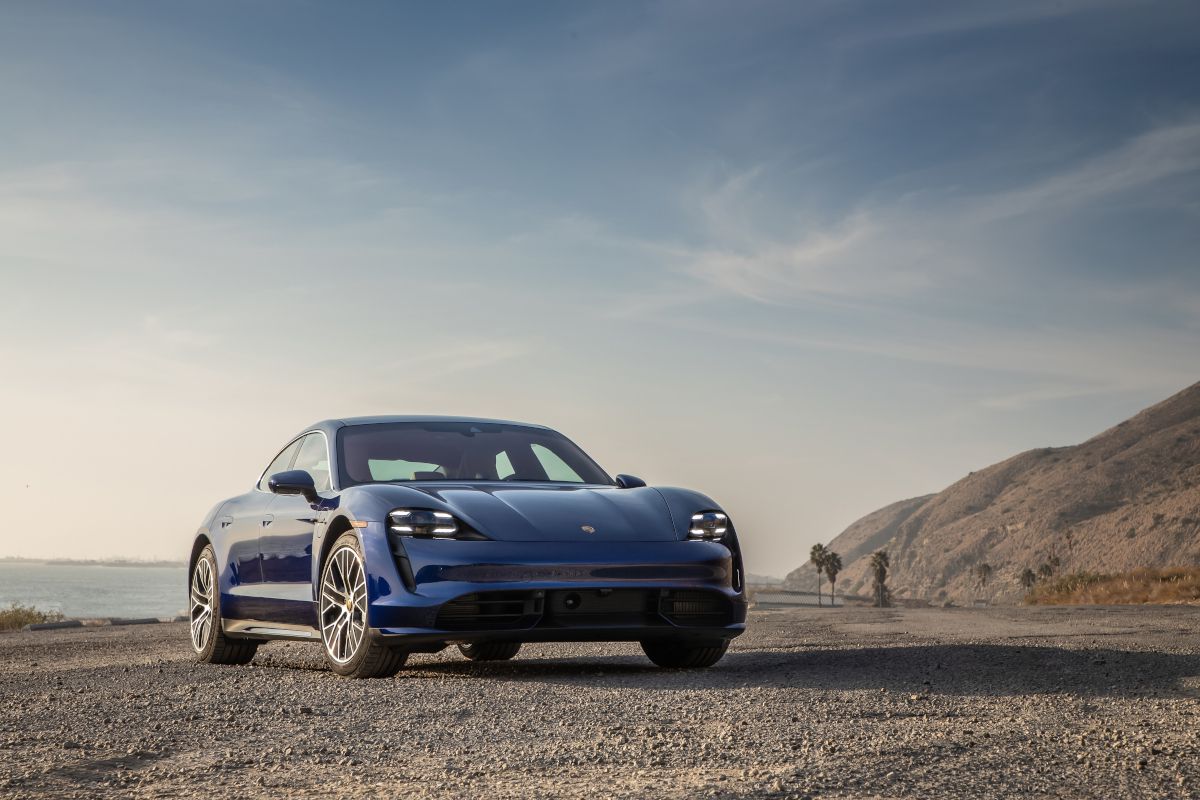
Porsche revealed its first EV in Toronto Canada ・ Photo by Porsche
Electric cars are coming. At this point, it’s not clear how quickly they’ll represent a big chunk of the cars sold in the U.S., and how many folks will hold tight to the convenience of an easy-to-refuel gasoline engine. But the electric vehicle (EV) technology is producing a wide range of models that’s growing fast.
Many upcoming electric cars are following Tesla’s example. They’re beautiful, fast, luxurious, and expensive. The Porsche Taycan, an all-electric sedan, is all of the above. The German performance brand’s first fully electric vehicle, the Taycan sets out to prove that a great driver’s car doesn’t need to use gasoline. Here are 10 things you should know about the 2021 Porsche Taycan.
1. A new base model cuts the starting price to $79,900.
The Taycan debuted last year with major sticker shock, starting at more than $100,000 for the base model with no options. Now, the sedan is more closely aligned with the archrival Tesla Model S with a base price of $79,900. The Taycan 4S model — the previous starting point, which has all-wheel drive and more power — continues to start at $103,800.
You can also get the max-power Turbo and Turbo S models. No, electric cars don’t have a turbocharger; Porsche just likes to use that designation to mean “the ones that go fast.” But be prepared to pay up for your speed: $150,900 for the Turbo and $185,000 for the Turbo S. A $7,500 federal tax credit makes the Taycan more affordable, but like other Porsches, this isn’t a car for the masses.
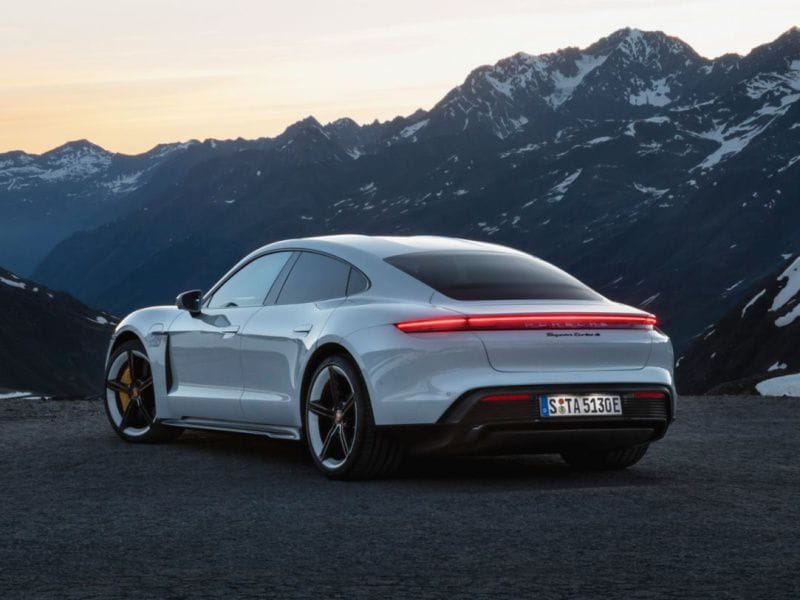
Photo by Porsche
2. The EPA says it can go up to 227 miles per charge, but you’ll probably go farther.
Depending on the powertrain you choose, the Taycan goes an EPA-estimated 199 to 227 miles per charge. After that, it’s time to plug the vehicle back in.
Those range estimates are significantly behind the Tesla Model S. Its greater range, plus Tesla’s proprietary network of “Supercharger” car charging stations, makes the Model S the better electric car for a long trip. However, as long as you don’t plan to often drive 200 miles in a day, the Taycan should have plenty of range cushion for you. It has also reliably beaten the EPA range estimates in third-party testing. Fully recharging an empty battery takes about 10 hours on a 240-volt household outlet or public car charger, but we expect most owners will top off the car when it’s still far from depleted. With a public fast-charging station, you can get from 5% of charge remaining to an 80% charge in just an hour and a half.
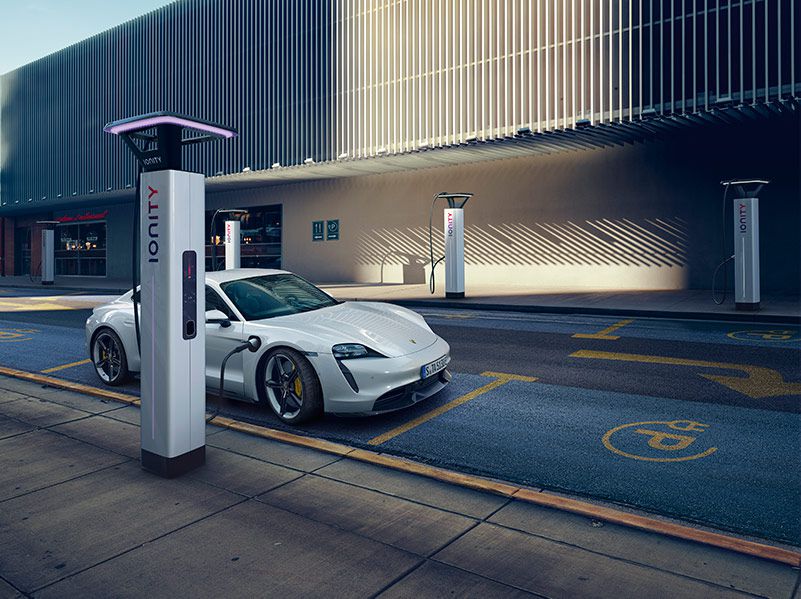
Photo by Porsche
3. A new Cross Turismo version is coming this summer.
A year after its debut, Porsche is launching a new variant of the Taycan. It’s called the Taycan Cross Turismo, and it’s the Subaru Outback of the Taycan lineup. In other words, it’s more like a station wagon than a sedan, trading a bit of sports-car style for more cargo space.
The Cross Turismo also adds some plastic cladding as a faint nod toward an SUV, rides an inch higher than the sedan (you can play with the adjustable-height suspension, lowering it to the Taycan sedan’s level or raising it by 3 inches), and adds a “Gravel” driving mode to its all-wheel-drive system. Choosing the Cross Turismo means a base price of $90,900, but that’s because you can’t get a base rear-drive model. Between comparable trim levels, the bigger size and adjustable suspension add up to $7,000 extra for the 4S but less than a $3,000 premium on the Turbo and Turbo S.
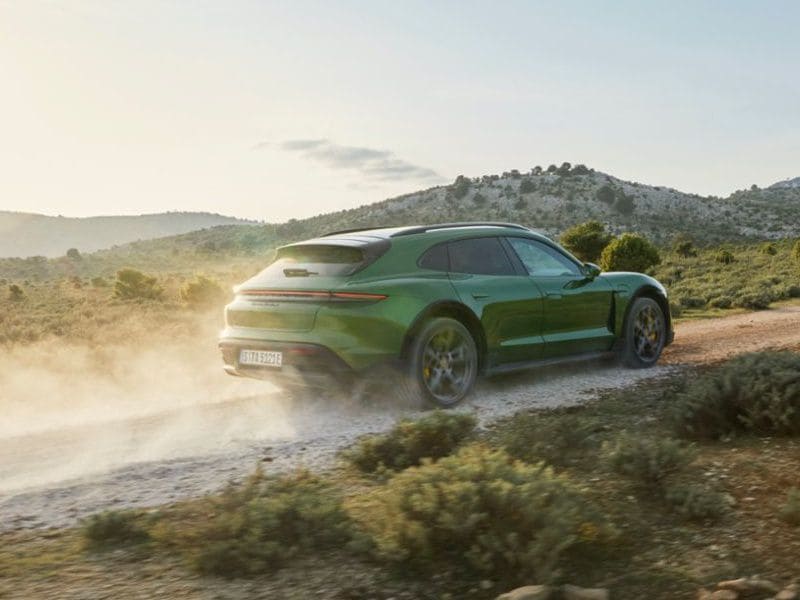
Photo by Porsche
4. It can hit 60 mph in 2.6 seconds — over and over.
Tesla is famous for its ridiculously quick 0-60 acceleration runs, but there’s a catch: The best performance is often a one-time trick. You need maximum battery capacity and may even need time to precondition the battery. To be clear, Tesla vehicles are always fast, but you can’t always get the blinding supercar-level speed they advertise.
But if you buy a Porsche Taycan Turbo S, you can hit 60 mph in 2.6 seconds as many times as you want, at least until you deplete your battery (which would take a lot less than 200 miles). That makes it among the quickest street-legal cars in history. Using the Overboost launch control system, the car makes a mighty 750 horsepower; it drops to a “mere” 616 hp when you’re driving normally. The base Taycan has 402 hp with Overboost — good for a 5.1-second dash to 60 mph — and 321 horsepower without it. The 4S has 429 hp in routine conditions and 522 hp with Overboost, with 60 mph arriving in 3.8 seconds; the Turbo has 670 hp with Overboost and 612 hp without, and launch control brings it to 60 mph in 3 seconds even.
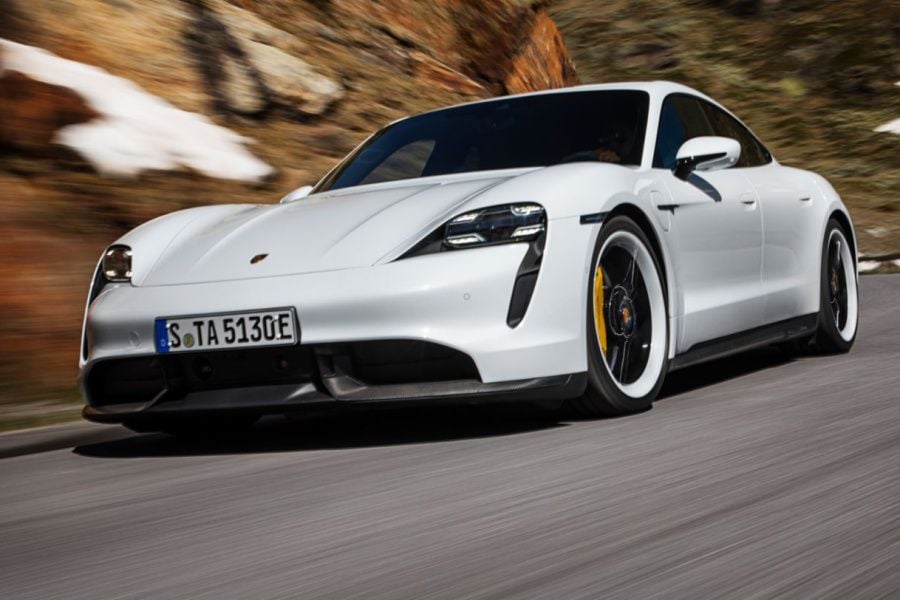
Photo by Porsche
5. It drives like a Porsche.
Porsche wouldn’t be Porsche if its cars weren’t agile, and that applies to the electric Taycan. In fact, it gets the extra advantage of a low center of gravity; its heavy battery pack rests under the vehicle’s floor. This is an electric car that puts driving excitement at the top of its priority list, and it generates no complaints.
Also in keeping with the vehicle’s driver-first focus, the Taycan offers the only multispeed transmission in an electric car. Porsche uses first gear for extra-quick acceleration and second gear for greater efficiency and higher speeds. You’ll only notice when you’re flooring the vehicle and this super-fast vehicle suddenly surges even faster.
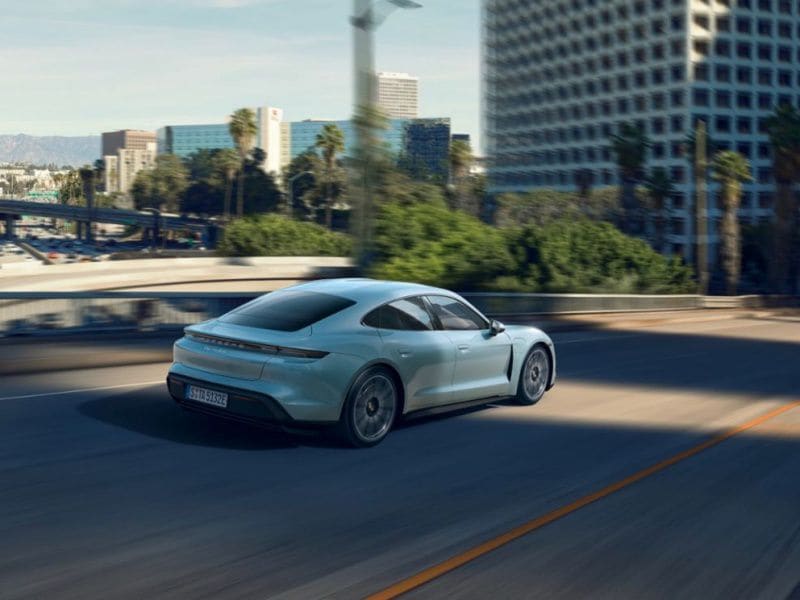
Photo by Porsche
6. You’ll have to use the brake pedal.
Many electric vehicles have embraced “one-pedal driving,” where you use the brakes primarily for emergency stops and otherwise control your speed just by lifting your foot off the accelerator. A process called regeneration, or regen, makes electricity from the energy from the car’s forward motion — and uses it to provide a bit of extra battery charge. This process also slows the car, making it unnecessary to use the brakes in normal conditions.
But Porsche decided once again to prioritize the driving experience. You can select a regeneration amount, but you will have to use the brakes when you want to stop. On the flip side, doing so feels more natural to someone used to driving a gas-powered Porsche. It also results in a more conventional brake-pedal feel when you do use the brakes. And braking the Taycan does generate electricity, just not quite as much as it would under pure one-pedal regen.
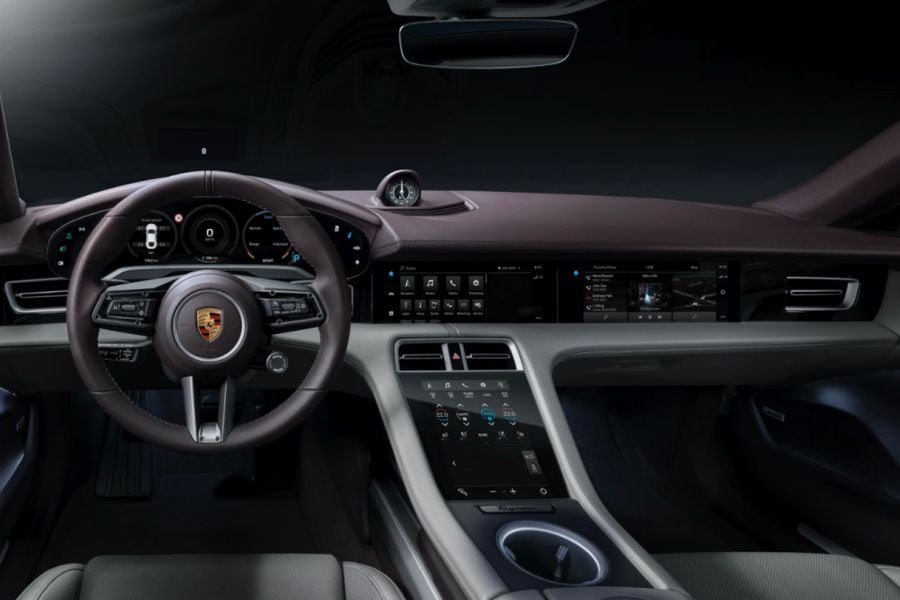
Photo by Porsche
7. It looks like a Porsche.
The Taycan doesn’t share its body with any other Porsche model, but it is instantly recognizable as a Porsche — and an attractive one at that. It’s low and wide, and the smoothly rounded fender bulges go back to the brand’s early days. It’s a big car, which just gives it that much more presence. There’s nothing about the design that screams “I’m a car of the future,” but the teardrops that hang down from its headlights can help you distinguish it from the gas-powered Panamera sedan.
The new Cross Turismo model has a longer and taller roof, but it disguises this functionality a bit by keeping the rear windows small and low. That’s not the best news for outward visibility, but it protects the stylish, sporty design aesthetic.
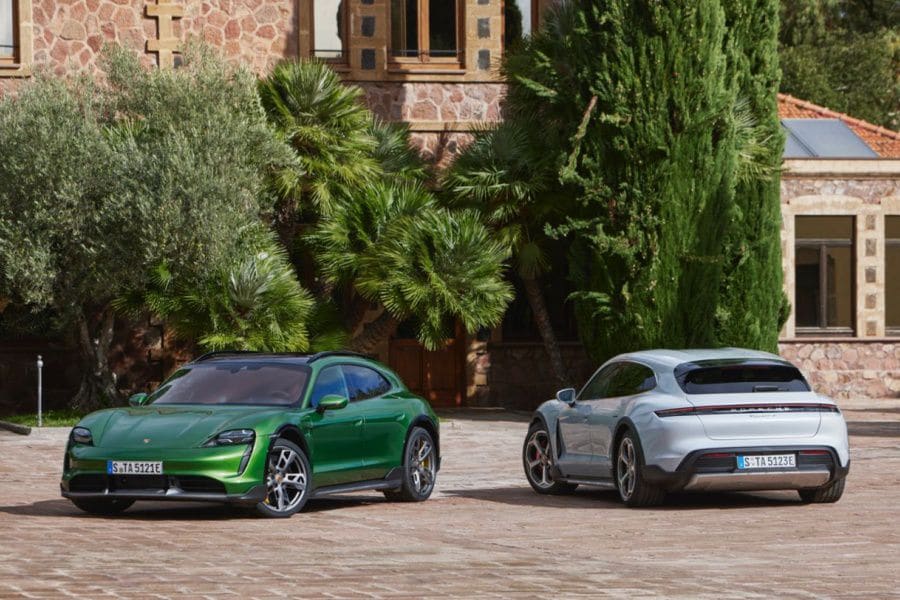
Photo by Porsche
8. The front seats are very comfortable; the back, not so much.
The Taycan’s front seats have won acclaim for their exceptional support and comfort. And if you like the feel of a Porsche sports car, you’ll love the low-slung seating position.
However, although this is a big car, it’s a sports sedan and not a limo. You can configure it with a two-passenger or three-passenger rear seat, but there’s limited head, leg, and foot space. If you’re used to a two-door Porsche, the four-door Taycan will be family-friendly; if you’re coming from a Tesla Model S, or even a Tesla Model 3, you’ll have to adjust your rear-seat expectations. The taller Cross Turismo does have more rear headroom, along with more cargo space: 15 cubic feet behind the rear seat (measured to the top of the seatback, not the ceiling) and 42.8 cubic feet with the rear seat folded down. The Taycan sedan has a modest 12.9 cubic feet of space in its conventional trunk, but both models also have a small 2.8-cubic-foot front trunk — something Porsche knows well from its rear-engine 911 and mid-engine Boxster and Cayman.
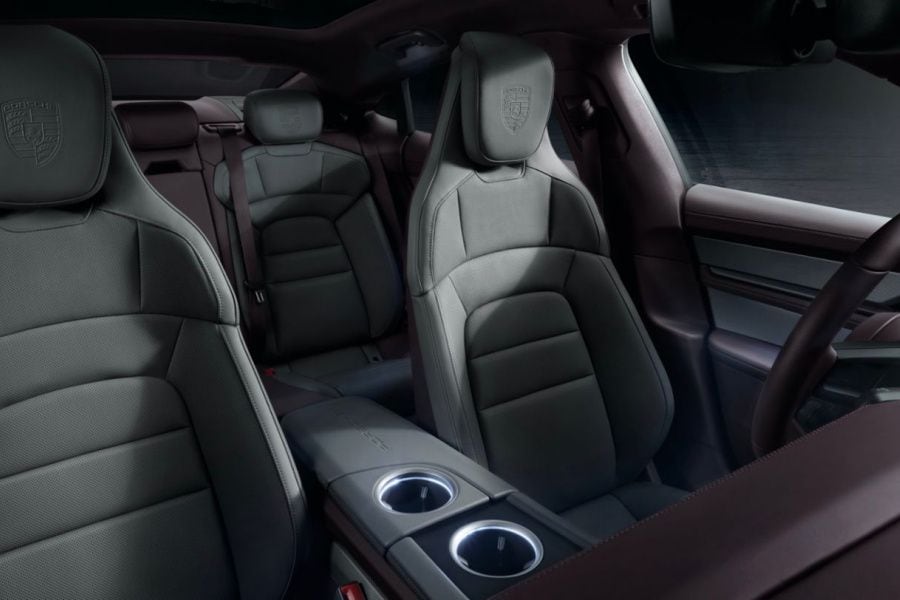
Photo by Porsche
9. It’s not the only electrified Porsche.
While the Taycan is Porsche’s first and only current fully electric car, it’s not the only electrified Porsche model. It also sells two plug-in hybrid electric vehicles (PHEVs): versions of the Cayenne SUV and Panamera sedan that can travel nearly 20 miles on an electric charge, yet also have gasoline engines on board to make more power and cover longer drives. If you want the style and driving experience of a Porsche but aren’t ready to commit to a zero-gas lifestyle, these E-Hybrid models might be for you.
Separately, Porsche also has two more EVs in the pipeline: electric versions of the Cayenne and Macan SUVs. However, the Taycan will remain its only EV-exclusive model with no gas option for the time being, and it’s the only one you can buy right now.
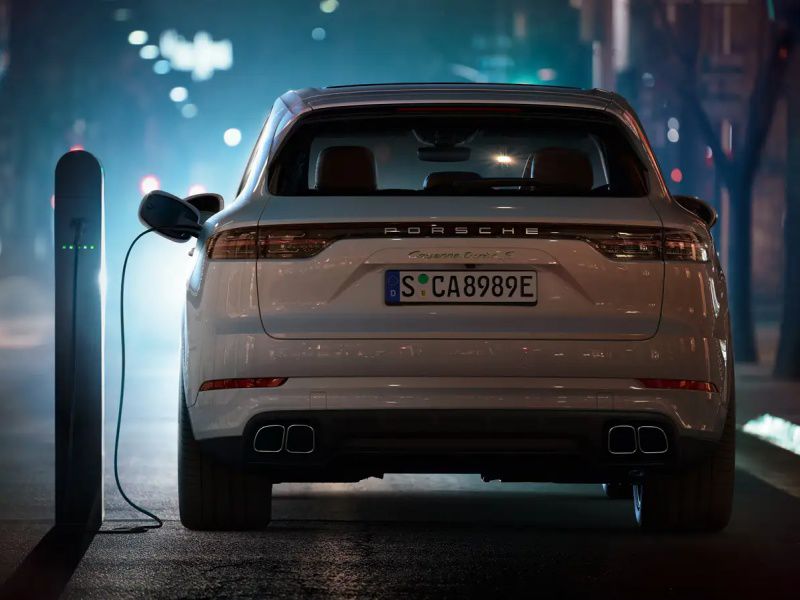
Photo by Porsche
10. A new Audi cousin is coming.
Audi and Porsche are corporate cousins under the same corporate umbrella as Volkswagen, Bentley, and Lamborghini, and the brands sometimes share components. Such is the case with the Taycan.
This summer, a new Audi version of the Taycan will arrive in dealerships as the 2022 Audi e-tron GT. It straightens out some of the Taycan’s curves in favor of sharper creases and more angular lights, and its interior is pure Audi, but the vehicle’s proportions and mechanical components are shared. The e-Tron GT is a bit cheaper than comparable Taycans, but there’s no Audi equivalent to the $79,900 base Taycan. This Audi is priced from $99,900 with the same $7,500 federal tax credit as the Porsche.
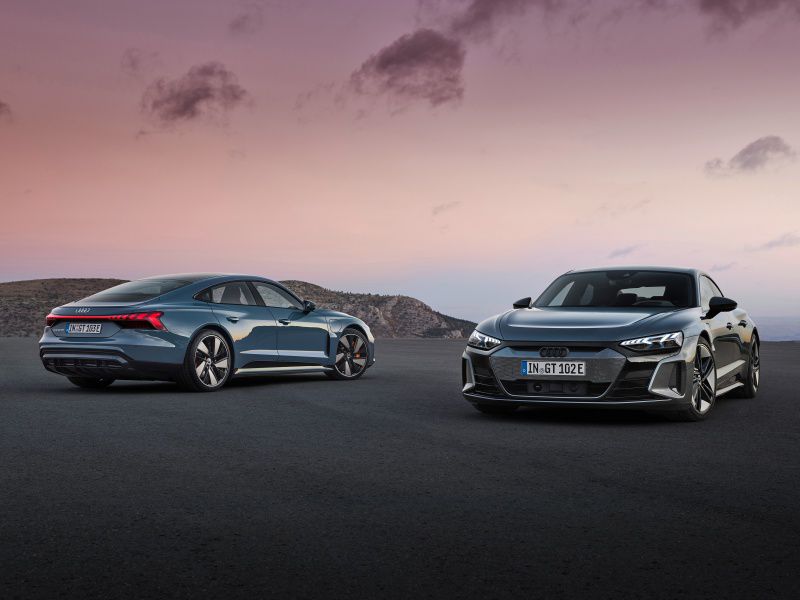
Photo by Audi